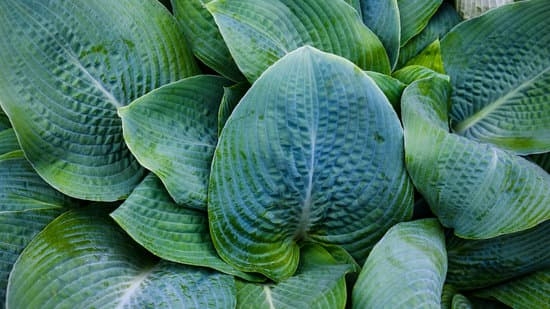Are you looking for ideas for small child-friendly gardens? Creating a space that is safe, engaging, and educational for children can be a rewarding project for families.
From selecting the right plants to incorporating fun features and sensory experiences, there are a variety of ways to design a garden that will capture the imagination of young ones. In this article, we will provide you with tips and suggestions on how to transform your small garden into a haven for playful exploration and learning.
When it comes to designing a garden that is suitable for children, safety should always be the top priority. With some thoughtful planning and precautions in place, you can create an environment where kids can freely play and discover without any worries. From choosing child-friendly plants to implementing sturdy structures, we will guide you on how to make your small garden a secure space for little ones to enjoy.
Apart from safety considerations, selecting the right plants is essential when designing a child-friendly garden. By incorporating plants that are not only safe but also engaging for children, you can create an environment that sparks curiosity and fosters a love for nature. From colorful flowers to sensory herbs, we will provide you with suggestions on how to choose the perfect plants that will captivate young minds in your small garden design.
Safety First
When it comes to creating a child-friendly garden, safety should be the top priority. Here are some tips on how to ensure that your small garden is a safe and secure space for children to play and explore:
- Install sturdy fencing around the perimeter of the garden to keep children from wandering off or accessing potentially dangerous areas.
- Remove any sharp objects, thorny plants, or toxic substances from the garden that could pose a hazard to young children.
- Create clear pathways and designated play areas to prevent tripping hazards and encourage safe exploration.
In addition to these general safety measures, there are specific precautions you can take when designing a small child-friendly garden:
- Select plants that are non-toxic and child-safe, such as marigolds, sunflowers, or lavender, to avoid any potential ingestion hazards.
- Avoid using chemicals or pesticides in your garden that could be harmful to children – opt for organic methods of pest control instead.
- Consider installing cushioned surfaces under play equipment like swings or slides to minimize the risk of injuries from falls.
By implementing these safety tips and precautions, you can create a secure environment where children can play, learn, and grow in their own small child-friendly garden.
Choosing the Right Plants
When creating a child-friendly garden, it is essential to choose the right plants that not only provide a safe environment but also engage and captivate young minds. Here are some suggestions for child-friendly plants that offer both safety and excitement:
- Sunflowers: These tall and vibrant flowers are not only visually appealing but also easy for children to grow. They can learn about the life cycle of plants as they watch sunflowers grow from seeds to towering blooms.
- Strawberries: Kids will love picking and eating their own juicy strawberries straight from the garden. These sweet fruits are not only delicious but also high in vitamin C, making them a nutritious choice for little ones.
- Mint: Fragrant herbs like mint can add sensory stimulation to the garden, as children can enjoy touching and smelling the leaves. Mint is also easy to grow and can be used in various recipes or homemade teas, providing a fun learning opportunity for kids.
Another great idea for small child-friendly gardens is to plant vegetables that kids can harvest and eat later. Vegetables like cherry tomatoes, carrots, and cucumbers can be exciting choices as children get to witness the fruits of their labor by harvesting their own food.
Moreover, incorporating plants with different textures such as fuzzy lamb’s ear or velvety pansies can provide tactile experiences for children. Encourage them to explore the varying textures in the garden, fostering an appreciation for nature’s diversity.
By selecting plants that are safe, engaging, and educational, you can create a stimulating environment that nurtures a child’s curiosity and love for nature in your small child-friendly garden. Remember to involve kids in the selection process to empower them and instill a sense of ownership over their garden space.
Fun Features
When it comes to designing a small child-friendly garden, incorporating fun features like swings, slides, and sandboxes can enhance the overall experience for kids. These play elements not only provide entertainment but also encourage physical activity and imaginative play.
One creative idea is to create a mini jungle gym using wooden poles and ropes, giving children the opportunity to climb and explore in a safe and supervised environment. Additionally, installing a small slide with padding at the base can add an element of thrill while ensuring safety.
Another fun feature to consider for a small child-friendly garden is a sensory garden area that includes elements like textured paths, scented plants, wind chimes, and colorful flowers. This allows children to engage their senses and learn about the natural world through hands-on exploration. Adding stepping stones or wooden logs for balance exercises can further enhance the sensory experience while promoting physical coordination and balance in young children.
Incorporating a sandbox into your small child-friendly garden can also provide hours of entertainment for kids. A sandbox not only encourages creative play as children build sandcastles and dig tunnels but also helps develop fine motor skills. Consider offering various sand toys like buckets, shovels, and molds to enhance the play experience. Remember to cover the sandbox when not in use to keep out animals or debris that may affect its cleanliness and safety.
| Play Element | Benefits |
|---|---|
| Mini Jungle Gym | Encourages climbing skills and imaginative play |
| Sensory Garden Area | Engages senses, promotes learning about nature |
| Sandbox | Develops fine motor skills, fosters creativity |
Sensory Garden
Textures play a crucial role in sensory development for children, so including plants with different textures like fuzzy lamb’s ear leaves, smooth pebbles, or rough tree bark can provide a tactile learning experience. Children can touch and feel the various surfaces in the garden, stimulating their sense of touch and enhancing their overall sensory perception. Additionally, incorporating colorful flowers like vibrant marigolds, bold zinnias, and cheerful sunflowers can add visual interest and appeal to the sensory garden.
A well-designed sensory garden not only provides an opportunity for children to engage with nature but also promotes relaxation, exploration, and creativity. By focusing on scents, textures, and colors in the garden design, parents and caregivers can create a space where children can learn and play while developing their senses in a safe outdoor environment.
With thoughtful planning and selection of plants that cater to sensory experiences, small child-friendly gardens can become magical spaces that inspire curiosity and wonder in young minds.
| Sensory Experiences | Examples |
|---|---|
| Scents | Lavender, Rosemary |
| Textures | Lamb’s Ear Leaves, Pebbles |
| Colors | Marigolds, Zinnias |
DIY Projects
Painted Rock Garden Markers
One fun and simple DIY project to involve kids in gardening is creating painted rock garden markers. This activity not only helps children learn about different plants but also adds a personalized touch to the garden. Start by collecting smooth, flat rocks from your yard or a local park.
Then have the kids use acrylic paint to decorate each rock with the name of a plant or flower in the garden. Once dried, these colorful markers can be placed in the soil next to the corresponding plants.
Birdhouse Building
Another engaging DIY project for kids in the garden is building birdhouses. Not only does this activity encourage creativity and woodworking skills, but it also attracts birds to your garden, providing a wonderful learning opportunity for children to observe wildlife up close. You can find simple birdhouse kits at a local craft store or online, and kids can personalize them with paint or decorations before hanging them in the garden.
Vertical Herb Garden
For a practical yet creative DIY project, consider making a vertical herb garden with your kids. This project is perfect for small spaces and teaches children about growing their own food. Using wooden pallets or old shoe organizers, create a vertical structure where various herbs can be planted.
Kids can help choose which herbs to grow, plant them in small pots or containers attached to the structure, and watch as their mini herb garden grows over time. It’s both educational and rewarding for young gardeners.
By involving children in these DIY projects in the garden, not only are they having fun and learning new skills, but they are also developing a sense of ownership and connection to nature that will last a lifetime. Plus, these projects help create a child-friendly space where little ones can actively participate in gardening activities while fostering their creativity and interest in nature.
Educational Opportunities
Wildlife Spotting
One of the best ways to teach children about nature is by observing wildlife in their natural habitat. You can attract birds, butterflies, bees, and other critters to your garden by planting native flowers and providing food sources like bird feeders.
Encourage kids to keep a nature journal where they can record the different types of animals they spot and learn more about their behaviors. This hands-on experience will not only educate children about local wildlife but also instill in them a sense of responsibility towards the environment.
Gardening Workshops
Hosting gardening workshops for kids in your child-friendly garden can be a fun and educational way to teach them about plants, soil, and sustainability. Get children involved in every step of the gardening process, from planting seeds to watering and weeding.
Explain how plants grow, what they need to thrive, and how important it is to take care of our green spaces. You can even introduce them to composting or upcycling projects to show them the importance of reducing waste and recycling materials.
Nature Scavenger Hunts
Organizing nature scavenger hunts in your garden is a great way for kids to explore their surroundings while learning about different elements of nature. Create a list of items for children to find such as different types of leaves, flowers, insects, or rocks.
Encourage them to use their senses – sight, touch, smell – to discover these items in the garden. Not only will this activity engage their curiosity and observational skills, but it will also help children connect with the natural world around them on a deeper level.
Maintenance Tips
Creating a small child-friendly garden is a rewarding project that can provide endless hours of outdoor fun and learning for children. However, maintaining the garden to ensure it remains safe, engaging, and enjoyable throughout the seasons is key to its success. By following some practical maintenance tips, you can keep your child-friendly garden in top shape for your little ones to enjoy.
One important aspect of maintaining a child-friendly garden is regularly inspecting the play equipment and structures to ensure they are safe for use. Check for any signs of wear and tear, loose screws or sharp edges that could potentially harm children. It is also essential to regularly clean and sanitize any play elements like swings, slides, and sandboxes to prevent the spread of germs and bacteria.
In addition to keeping the play areas safe, ensuring that the plants in your child-friendly garden are well-maintained is crucial. Regular watering, weeding, and pruning will not only help keep the garden looking beautiful but also create a healthy environment for children to explore.
Consider involving kids in simple gardening tasks like watering plants or picking fruits and vegetables as a way to teach them about responsibility and caring for the environment. By incorporating these maintenance tips into your routine, you can enjoy a thriving child-friendly garden that provides endless opportunities for outdoor play and learning.
Frequently Asked Questions
How Do I Make a Kids Play Area in My Garden?
Creating a kids play area in your garden is a fun and exciting project. Start by designating a space specifically for play equipment like swings, slides, and a sandbox. Include interactive elements like chalkboards, hopscotch, or a DIY obstacle course. Make sure to prioritize safety by using soft ground coverings and avoiding any sharp edges or materials.
How Do You Make a Sensory Garden?
A sensory garden is designed to engage all five senses – sight, touch, smell, taste, and hearing. To create one, incorporate a variety of plants with different textures, colors, and scents such as herbs or flowers known for their fragrances.
Add wind chimes for auditory stimulation and paths made of different materials to provide tactile experiences. Consider including features like water elements or bird feeders for added sensory appeal.
How Do You Make a Small Garden Beautiful?
A small garden can still be beautiful with some strategic planning and creativity. Opt for vertical gardening techniques to maximize space by utilizing trellises or hanging planters. Choose a color scheme that complements the size of the garden – light colors can make it appear larger while darker tones can add depth.
Incorporate multi-functional furniture pieces like benches with built-in storage to serve practical purposes while adding aesthetic value. Lastly, consider adding mirrors or strategic lighting to create the illusion of more space and enhance the overall beauty of your small garden.

Welcome to my gardening blog! I am passionate about plants and enjoy sharing my knowledge and experiences with others. In this blog, I will write about everything related to gardening, from tips on how to get started to updates on my own garden projects.





